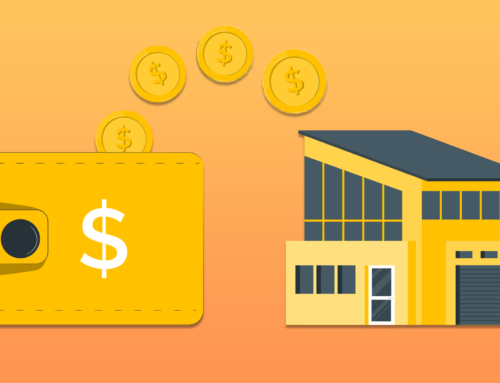Most people have come to mistakenly view cash (including cash to an existing loan and/or cash to a new loan), rather than benefits, as the driving force behind real estate transactions. So when cash is tight, transactions don’t get done, and benefits for buyers AND sellers are left by the wayside.
But knowledgeable creative real estate investors and well-trained real estate agents (investment and exchange specialists such as CCIMs, SECs, and NCEs,) have understood that cash itself is not the answer to all real estate conveyances. As part of that equation, these astute folks realize that liquidity is ultimately the ability to readily convert assets into desired benefits.
Consequently, they focus on circumstances surrounding ownership of the property and uncover objectives (benefits) sought by the parties as the basis for making more successful transactions happen.
As the dark skies of the growing “liquidity crunch” continue to threaten the economic well-being of real estate professionals across the board, they also present a tremendously rewarding challenge for those who use the opportunity to improve their skill-set–to help people solve their financial problems and to be paid well for it in the process.
It is times like these when the most discerning and well-connected real estate investors find the world is their oyster!
Pipe cleaner?
Liquidity in its purest form is essentially barter–an exchange of goods, products, services, or even promises–in lieu of cash. Real estate transactions are a simple matter of trading benefits between principal parties. Yet most people are never able to relate this simple concept to buying and selling real estate?
Oddly enough, many real estate investors have failed to fully explore this concept. Unfortunately, many smaller real estate investors have limited horizons with regard to the full spectrum of time-proven alternatives for maximizing the benefits when buying (or selling) investment real estate!
And like many retail real estate customers, too many creative real estate investors fail to fully and carefully think through their objectives and how they might best achieve them. They fall back to thinking that cash is the only answer!
At the same time, most retail real estate agents, note brokers, and even note investors are not even familiar with many of the creative financing structures that have been transpiring for decades.
Astute creative real estate investors and private note investors recognize that there are over 160 methods for acquiring real estate–only THREE of which are all cash (cash, cash to the existing Loan, cash to a new loan).
They realize that knowing how and when to use even just a few of these techniques can often replace the need for cash, thus injecting liquidity into the marketplace to facilitate more transactions and generating desired benefits for the parties–benefits that might not have occurred otherwise.
The following are just a small sample of the more common techniques that experienced investors use to buy or sell property. And most of these will usually have private notes somewhere in the mix:
• Sell land only
• Sell building only
• Sale with option to buy back
• Sale with leaseback
• Sale-leaseback with option to buy back
• Installment Sales IRC 453
• Wrap-Around Mortgages
• Pyramid Financing
• Exchanges IRC 1031
• Exchange land only
• Exchange building only
• Using trusts, especially Land Trusts
Several of these, such as well-crafted Wraps and Pyramids, are particularly powerful when institutional financing is hard, and/or expensive to come by. There are also many techniques for successfully selling privately held owner carryback notes, to maximize the benefits necessary to meet the needs of the parties, including the basic Split Down and Partial Purchase
Let Genie out of the bottle with liquid paper!
The private cash flow industry is again becoming fertile ground for small investors to pick up more of the quality notes that were previously snapped up by the larger institutional note buyers.
Enlightened investors who use even just a few of the proven, practical real estate financing options available–including how to use other deal structures in lieu of financing–will profit handsomely by helping others solve their problems.
The use of real estate notes (by local and private investors) to buy, sell, and trade for accumulating equities inherently injects liquidity into the real estate markets, allowing transactions to again flow.
Real estate agents and note brokers who become familiar with at least some common alternative financing techniques, understand the basic fundamentals, and recognize how they can profit from making note holders, property sellers, and less astute investors aware of them will become rainmakers!
The real estate markets are changing. Are you ready to make it rain?
[Editor’s Note: See additional commentary by David Butler by visiting Creative Real Estate Online’s Cash Flow Forum at: https://www.creonline.com/?s=cashflow which is hosted by paper experts, David Butler, Michael Morrongiello, and John Behle.(“Reprinted and used with Permission of the Author – 5-2008”)






